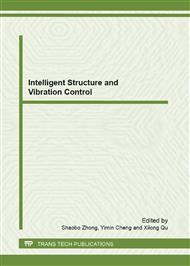[1]
Benny Thörnberg and Najeem Lawal. Real-time Component Labeling and Feature Extraction on FPGA, IEEE, (2009).
Google Scholar
[2]
Dong Kyun Kim, Dae Ro Lee and Thien Cong Pham. Real-time Component Labeling and Boundary Tracing System Based on FPGA. Proceedings of the IEEE International Conference on Robotics and Biomimetics, (2007).
DOI: 10.1109/robio.2007.4522158
Google Scholar
[3]
Holger Flatt, Steffen Blume and Sebastian Hesselbarth. A Parallel Hardware Architecture for Connected Component Labeling Based on Fast Lable Merging, IEEE, 2008, 144-149.
DOI: 10.1109/asap.2008.4580169
Google Scholar
[4]
Daniel F. DeMenthon and Larry S. Davis. Model-Based Object Pose in 25 Lines of Code.
Google Scholar
[5]
Jie Jiang, Guangjun Zhang and Xinguo Wei. Rapid Star Tracking Algorithm for Star Sensor, IEEE A&E Systems Magazine, 2009, 23-33.
DOI: 10.1109/maes.2009.5282286
Google Scholar
[6]
P.J. Pietraski, Z. Zojceski, D.P. Siddons, G.C. Smith and B. Yu. Digital. Centroid-Finding Electronics for High-Rate Detectors, IEEE Transactions on Nuclear Science, 1999 Vol. 46, No. 4.
DOI: 10.1109/23.790683
Google Scholar
[7]
Keqi Zheng, Shuching Chen. A Progressive Morphological Filter for Removing Nongrund Measurements From Airborne LIDAR Data. IEEE Transactions on Geoscience and Remote Sensing, 2003, 872-882.
DOI: 10.1109/tgrs.2003.810682
Google Scholar
[8]
YE Bin, PENG Jia-xiong. Small Target Detection Method Based on Morphology Top-Hat Operator. Joural of Image and Graphics, 2007, 15-19.
Google Scholar
[9]
P.J. Pietraski, Z. Zojceski, D.P. Siddons, G.C. Smith and B. Yu. Digital Centroid-Finding Electronics for High-Rate Detectors. IEEE Transactions on Nuclear Science, 1999, Vol. 46, 810-816.
DOI: 10.1109/23.790683
Google Scholar
[10]
Takashi Komuro, Idaku Ishii, Masatoshi Ishikawa and Astrshi Yoshida. A Digital Vision Chip Specialized for High-Speed Target Tracking. IEEE Transactions on Electron Devices, Vol. 50, 2003, 191-199.
DOI: 10.1109/ted.2002.807255
Google Scholar
[11]
Sharon S. Welch. Effects of Window Size and Shape on Accuracy of Subpixel Centroid Estimation of Target Images. NASA Technical Paper 3331, (1993).
Google Scholar
[12]
Boon Hean Pui, Barrie Aayes-gill, Matt Clark and Mike Somekh The Design and Characterisation of an Optical VLSI Processor for Real Time Centroid Detection. Analog Integrated Circuits and Signal Processing, 2002, 32, 67-75.
DOI: 10.1109/icsens.2002.1036977
Google Scholar


